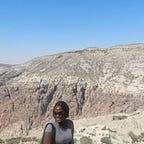DR Congo; A forty-two year walk with Ebola
In 2016, I was a journalist-in-residence at the Institute of Tropical Medicine, Antwerp.
It was then that I heard about the fascinating 40-year history of Ebola since the first outbreak in Yambuku, a small village in the DR Congo, which was told at the 8th international symposium on filoviruses in Antwerp, Belgium.
Around September, in 1976, the first Ebola blood samples were carried by a Congolese woman in her handbag from Zaire to Belgium on Sabena airlines. Yes, you read that correctly.
Currently, with an Ebola outbreak anywhere, travellers not even remotely near the source have to fill in forms, temperatures have to be taken, suspects quizzed and isolated or even denied access to places. It is the drill.
Nothing is the same anymore. Zaire is now the Democratic Republic of Congo, Sabena airlines — then the national carrier for Belgium — closed in 2001, to be succeeded by Brussels Airlines.
Most importantly, a new vaccine is currently being used for the first time in the outbreak in DR Congo. There is hope.
But back in history Ebola was unknown. In 1976, in Yambuku, a small village in Mongala Province in northern DR Congo, a young doctor Jean-Jacques Muyembe was ordered by the minister of health to make investigations about a disease that had killed some people.
Muyembe arrived with a medical assistant. The health workers suspected typhoid or yellow fever.
He examined some sick people and collected blood samples. In addition, he collected liver samples from 3 nurses who had died. There were no ‘moon suits’ only water and soap.
When a nurse who was vaccinated from typhoid and yellow fever said she had a fever the alarm bells started to ring. The trio (Muyembe, the medical assistant, and the nurse) flew to Kisansha to further investigate the samples.
The disease was nothing they knew. Sadly, that nurse and medical assistant died in the next few days but Muyembe was saved — he does not know how but maybe by washing his hands with water and soap.
A Congolese woman who was traveling to Belgium on Sabena airlines was asked to drop the blood samples off at the Institute of Tropical Medicine (ITM) in Antwerp, where Muyembe’s friend was working.
The Ebola samples arrived in Belgium in September 1976. Dr. Guido van der Groen picked them up on his bicycle, packed in containers and then took them for proper storage at ITM.
Here the team tried to identify the virus and found that it was close to the Marburg virus isolated from monkeys in Uganda by the Germans, but clearly, it was not the same.
Muyembe was informed about it and warned that it could be a very dangerous new virus. Scientists then tried to give the new virus a name.
At first, they opted for Yambuku where the index case was discovered but they soon realized that if you use the name of a town it will cause too much stigma.
Then they looked for any landmark near Yambuku and found the Ebola river which is why Ebola is now named after a river near Yambuku.
By 2016, the Ebola forty-year journey had seen 25 outbreaks, 30,900 cumulative cases and 12,800 deaths. A new book ‘on the trail of Ebola’ by Dr. Guido van der Groen details this history.
Unfortunately, more people have died in this new outbreak in DR Congo. But there is hope. However, clearly, the Ebola journey hasn’t been a ‘walk in the park’.
